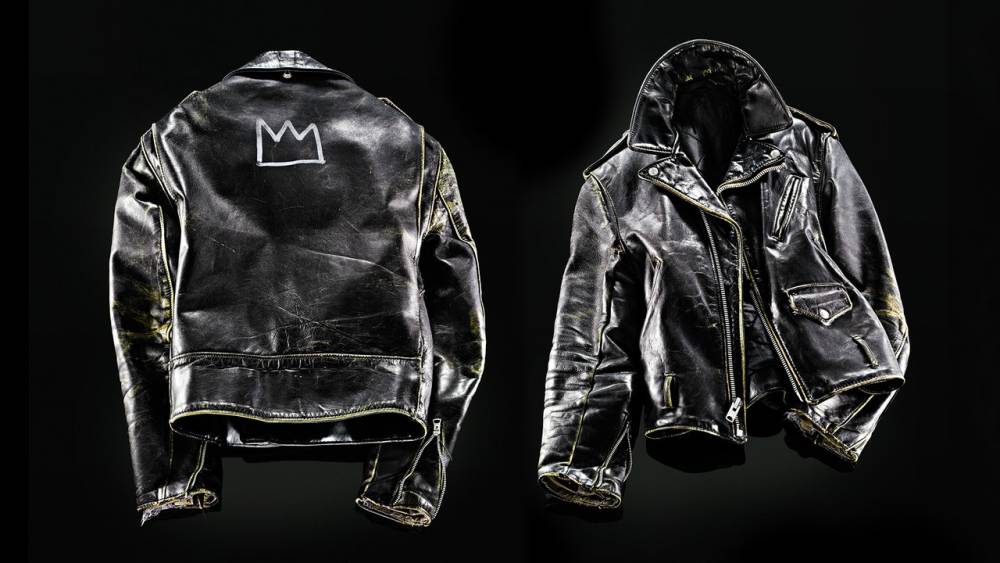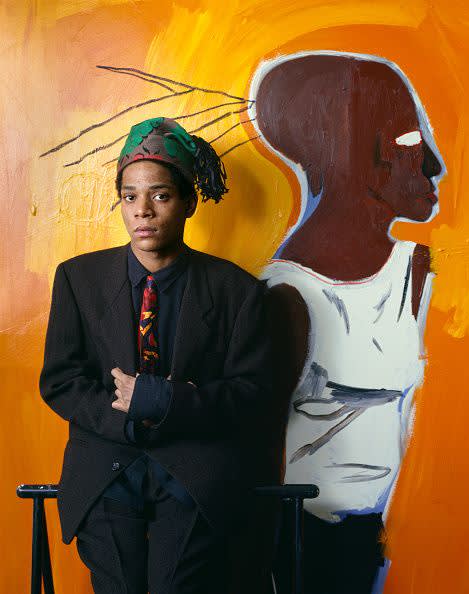
Evelyn Hofer
Jean-Michel Basquiat, 1985
American artist Jean-Michel Basquiat, internationally recognized for his evocative, abstract style of painting, focused his deeply abbreviated career on creating work that merged both high and low art and culture into a single, unique entity. A defining trait of Basquait’s oeuvre – one that has proven even more relevant today than perhaps it did in the 1980s – the late artist employed his overwhelming breadth of knowledge and extensive mental database of historical references to break down cultural boundaries through the separating of class and taste.
While Basquiat’s robust career is commonly credited for furthering the overall democratization of the art world in the decades that followed his death, a lesser known but no less significant example of the late artist’s unique methods by which to blend high and low culture was seen in his clothing designs of the late 1970s.
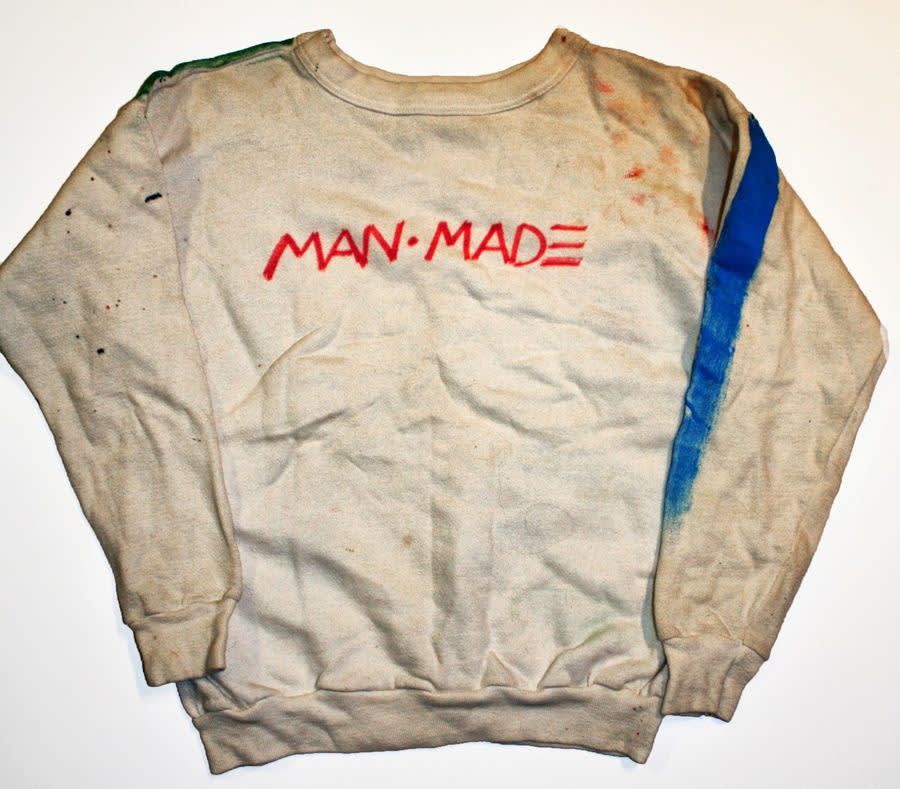
Jean-Michel Basquiat
Pullover Sweatshirt for Man Made

Jean-Michel Basquiat
Pullover Sweatshirt for Man Made
The fashion world, in many respects, is dictated by the tension between high art and mass culture. Much of the collections and brands we see today, emerge out of the fashion industry’s attempt to address this creative tension. Unsurprisingly, or perhaps not, no such example of an individual designer or artist authentically grappling with this struggle between high and low in the context of fashion has been as successfully executed as Basquiat’s ‘Man Made’ collection.
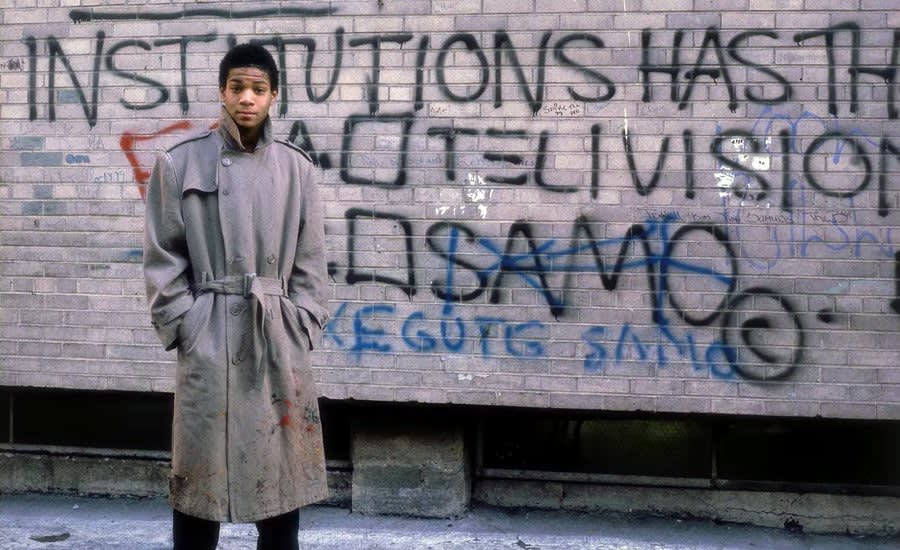
Jean-Michel Basquiat as SAMO
On the Streets of New York City, Late 1970s
In the later 1970s while still a teenager, Basquait was playing in a band called Grey and tagging building in downtown New York under the pseudonym ‘SAMO’. Before embarking on his creative journey into the realm of fine art, Basquiat developed a line of hand-painted clothing under the label ‘Man Made’ – a name that stemmed from a tag he was using in his graffiti at the time. The artist’s ‘Man Made’ garments were up-cycled from found materials he sourced on the street, and re-purposed like a canvas.
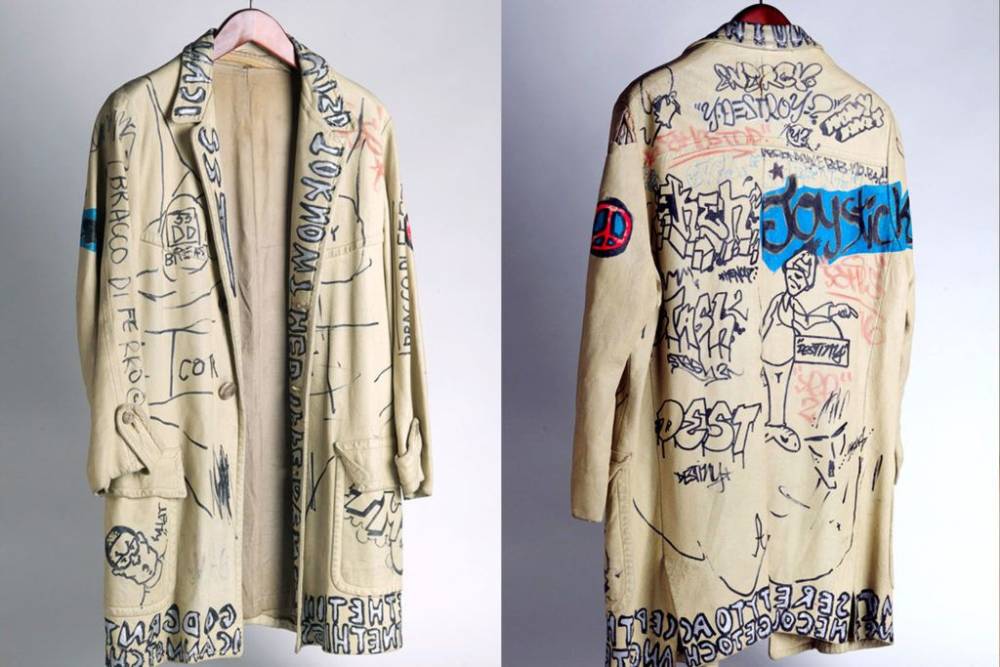
Jean-Michel Basquiat
Graffiti Trench Coat for Man Made

Jean-Michel Basquiat
Pullover Sweatshirt for Man Made
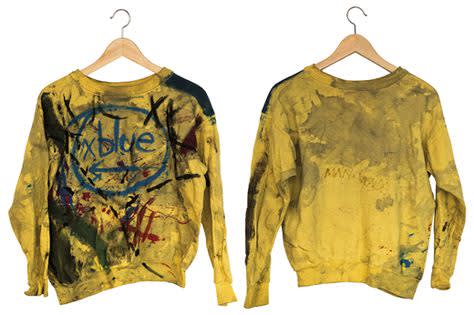
Jean-Michel Basquiat
Pullover Sweatshirt for Man Made
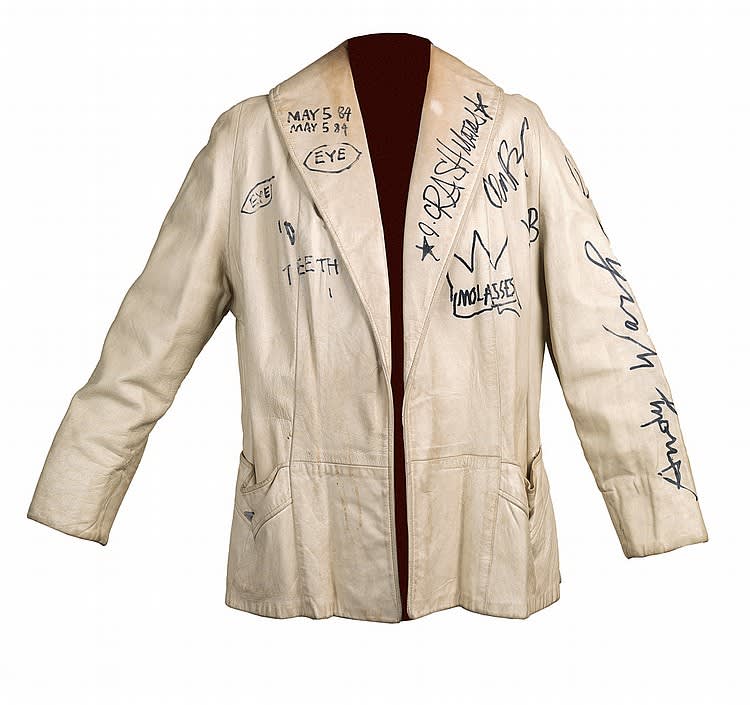
Jean-Michel Basquiat
Graffiti Leather Jacket for Man Made
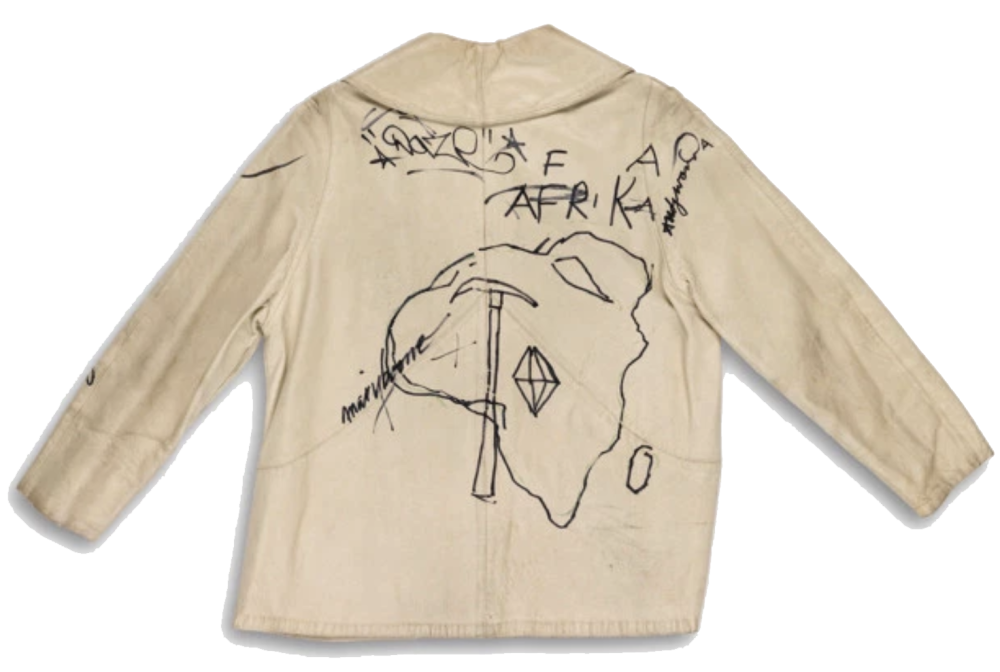
Jean-Michel Basquiat
Graffiti Leather Jacket for Man Made
In November 1979, Basquiat convinced costume designer Patricia Field to carry his line in her small, upscale boutique on 8th street in the East Village. Despite the artist having garnered little public recognition by that time, Field also allowed Basquiat to use her store windows to display his sculptural works.
Jean-Michel Basquiat
Gold Graffiti Trench Coat for Man Made
Patricia Field
In her store in NYC, 1980s
Within the store, Basquiat’s ‘Man Made’ collection was surrounded by found objects and materials the artist also sourced from the street, including boxes, foam, rubber, window frames, and an old typewriter. Each piece was painted with Basquiat’s signature crown – an early gesture of grandeur symbolizing the artist declaring that he was the king – as well as the ‘Man Made’ trademark, words, and poetic couplets, including “Looking at paintings/Hanging on a rack.” Using recycled clothing as his earliest canvas and a high-end boutique as his first gallery, Basquiat employed fashion as both a medium and a means of recognizing its artistic merit.
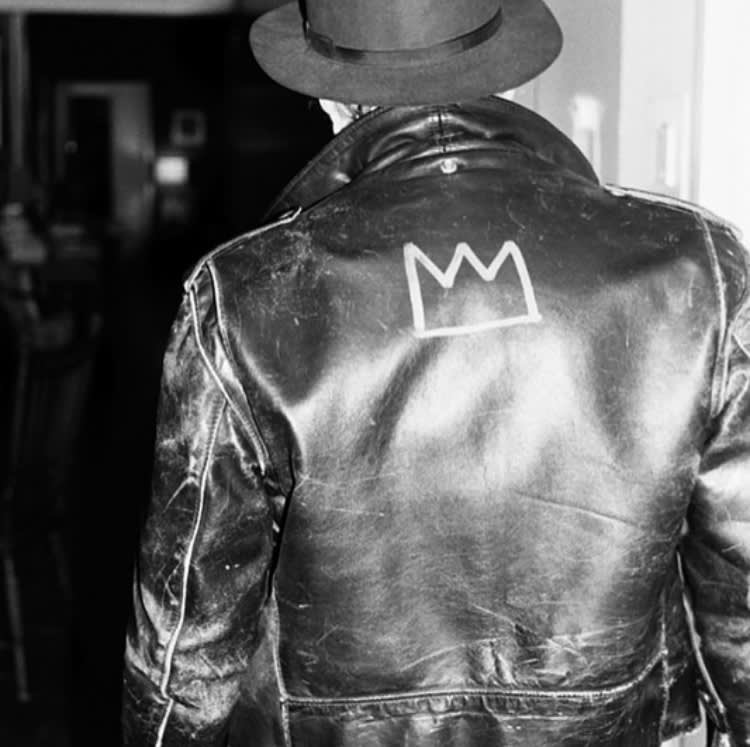
Jean-Michel Basquiat
Graffiti Jacket made for Glenn O'Brien
